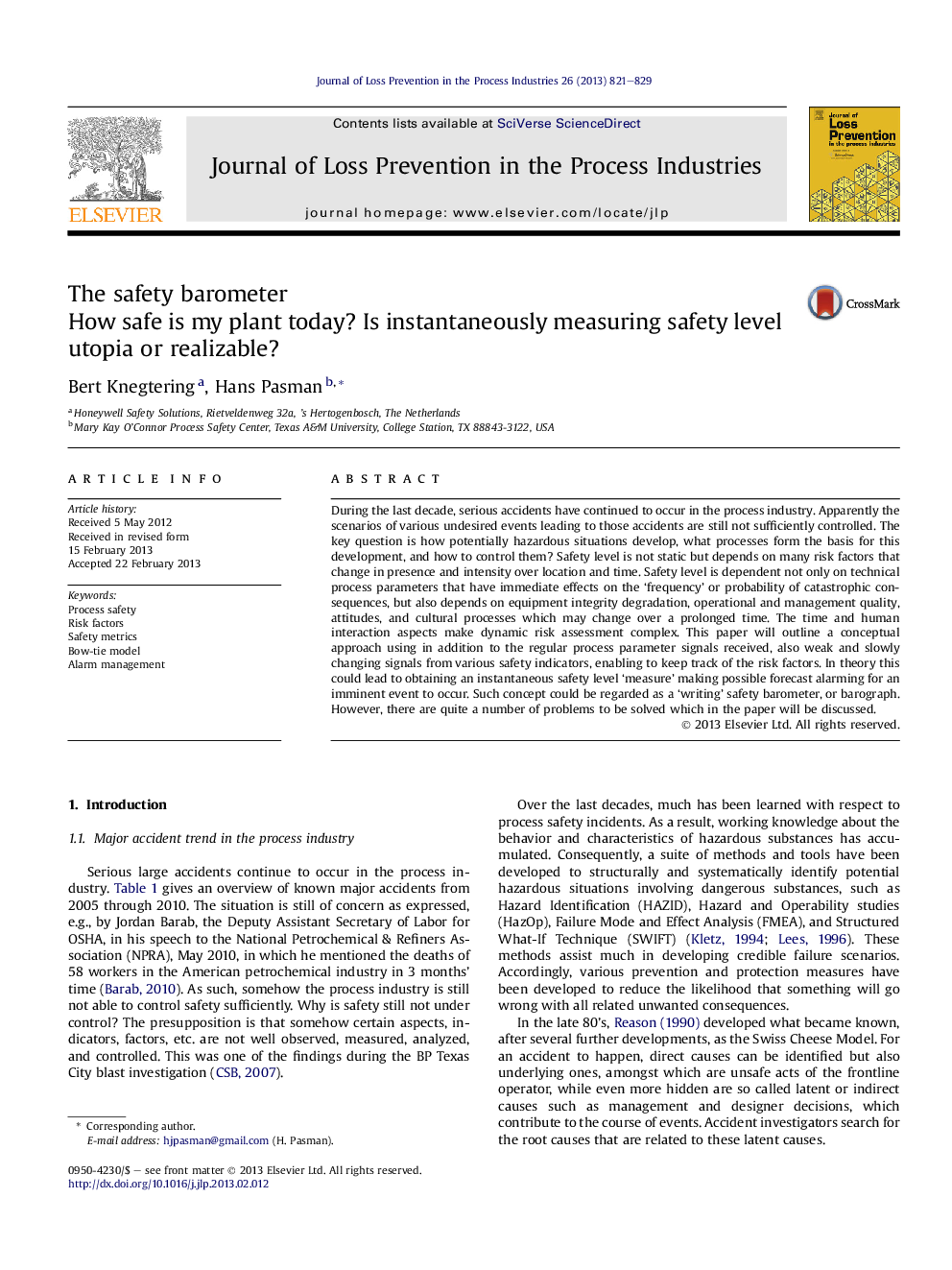| کد مقاله | کد نشریه | سال انتشار | مقاله انگلیسی | نسخه تمام متن |
|---|---|---|---|---|
| 586701 | 878228 | 2013 | 9 صفحه PDF | دانلود رایگان |

During the last decade, serious accidents have continued to occur in the process industry. Apparently the scenarios of various undesired events leading to those accidents are still not sufficiently controlled. The key question is how potentially hazardous situations develop, what processes form the basis for this development, and how to control them? Safety level is not static but depends on many risk factors that change in presence and intensity over location and time. Safety level is dependent not only on technical process parameters that have immediate effects on the ‘frequency’ or probability of catastrophic consequences, but also depends on equipment integrity degradation, operational and management quality, attitudes, and cultural processes which may change over a prolonged time. The time and human interaction aspects make dynamic risk assessment complex. This paper will outline a conceptual approach using in addition to the regular process parameter signals received, also weak and slowly changing signals from various safety indicators, enabling to keep track of the risk factors. In theory this could lead to obtaining an instantaneous safety level ‘measure’ making possible forecast alarming for an imminent event to occur. Such concept could be regarded as a ‘writing’ safety barometer, or barograph. However, there are quite a number of problems to be solved which in the paper will be discussed.
► Preventing major accidents requires continuously monitoring process safety level.
► Concept of risk factors can represent both short-and long-term threats to safety.
► Risk factors in scenario causal chains (bow-ties) produce input to safety dashboard.
► Warning arises from cumulative strength of risk factors increasing failure probability.
► Predicting time-to-event given deterioration is a challenge, but not impossible.
Journal: Journal of Loss Prevention in the Process Industries - Volume 26, Issue 4, July 2013, Pages 821–829